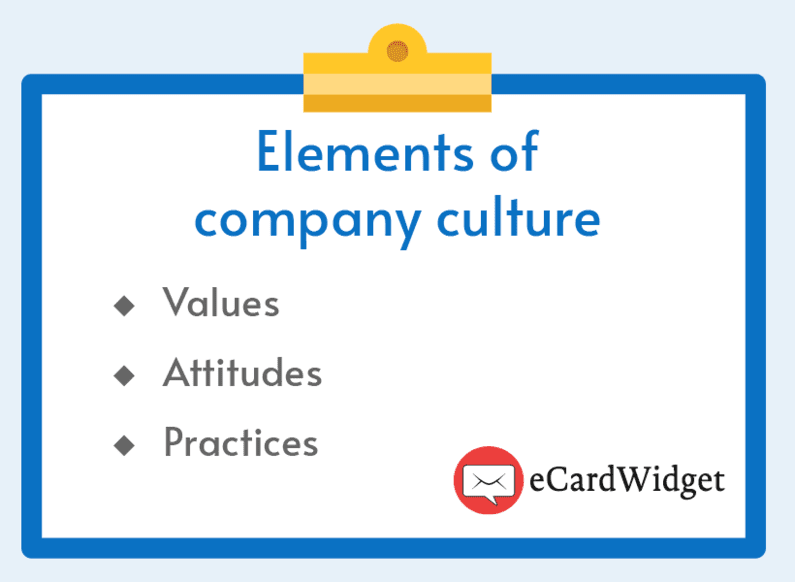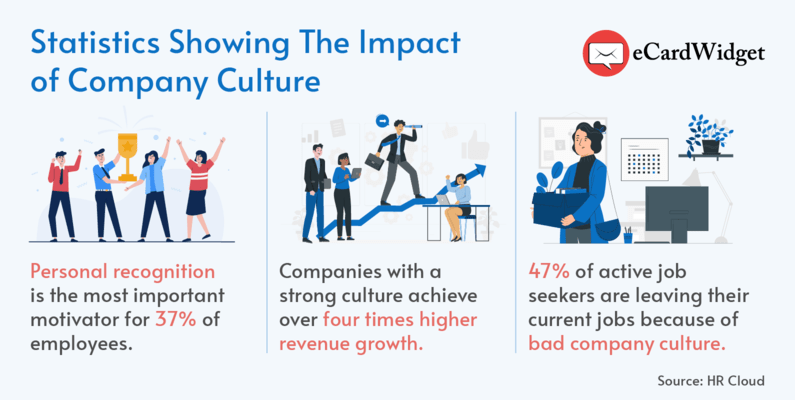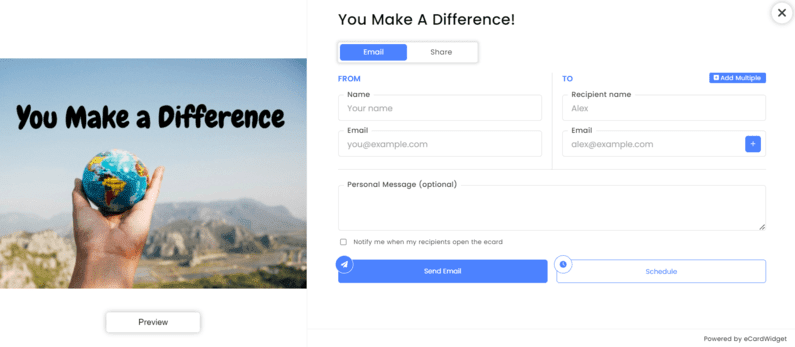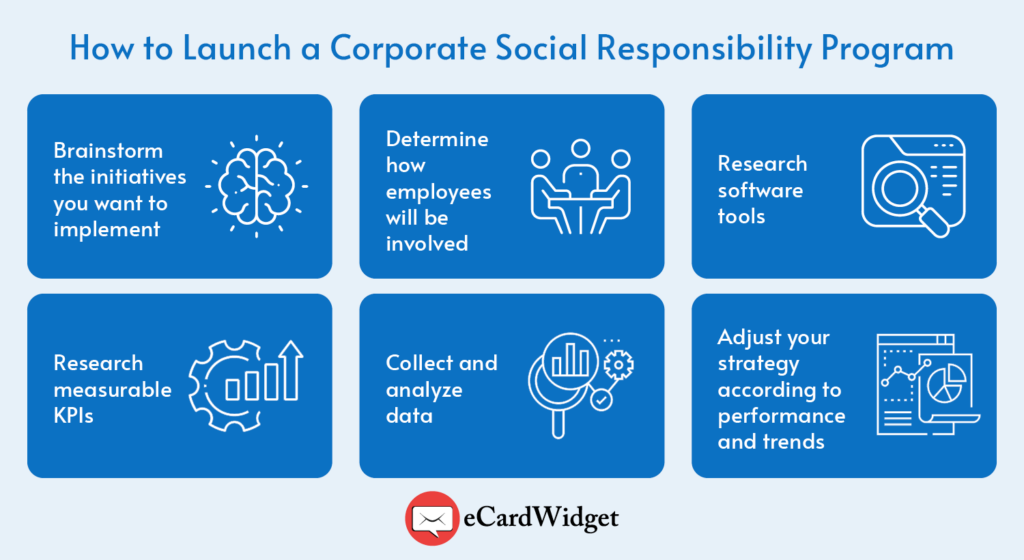According to research from Gettysburg College, the average person will spend 90,000 hours, or one-third of their life, working. It’s clear that work accounts for a lot of time in most schedules, so the workplace should be an enjoyable environment.
As an employer or business leader, it’s your responsibility to create and sustain a positive corporate culture. In this guide, we’ll discuss the importance of your company’s culture and how to improve it. We’ll cover:
- What is company culture?
- Examples of good company culture
- How do you evaluate company culture?
- Tools for company culture improvement
There’s no room for complacency when it comes to cultivating a positive workplace. Aside from your current employee engagement strategies, you’ll need to evaluate your company’s culture, define benchmarks for its success, and make improvements where necessary. Before you determine what changes you’ll make, let’s begin by defining company culture.

What is company culture?

Company culture is the environment of an organization, consisting of the values, attitudes, and practices of the company and its employees. Each of these elements can dictate the environment in the following ways:
- Values: A company’s values prompt employee commitment. For example, an employee whose personal values align with their company’s values will likely work productively to further the company’s mission since they agree with its principles.
- Attitudes: Think about the office environment like spending time with a friend. The experience can be negative if your friend is in a bad mood and positive if your friend is happy. In the same way, attitudes around the office can guide employees’ experiences in the workplace.
- Practices: Company operations, policies, and procedures can largely impact the way employees feel about their jobs, the treatment they receive from leadership, and the way the company is run.
Values, attitudes, and practices can be individually adapted to better the workplace environment, like when a company changes its paid time off policy to give employees more flexibility throughout the year. Elements can also impact each other. For example, a nonprofit could exhibit its core value of giving back to the community by implementing a volunteer match or gift match program. Consequently, the nonprofit’s employees will appreciate their company’s authenticity.
Look for perceptible ways these elements are reflected in your company. By identifying your office’s values, attitudes, and practices, you’ll be able to highlight positive workplace culture (and note areas that could use improvement)!
Examples of good company culture
Company culture describes the overall environment of a workplace, so good company culture refers to a positive work environment. A thriving culture boosts employee satisfaction and retention, which has a huge impact on organizational success as a whole. Consider these statistics from HR Cloud:

- Personal recognition is the most important motivator for 37% of employees. This likely explains why companies with a strong culture achieve over four times higher revenue growth.
- 47% of active job seekers are leaving their current jobs because of bad company culture.
Clearly, a strong corporate culture is an important factor in your organization’s success. But what does this look like in the day-to-day? Good culture will produce the following signs:
- Employee retention: People who enjoy their job won’t want to leave, so an office with a positive culture will retain its employees for years.
- Effective teamwork: A good company culture will cultivate positive workplace connections, as well. Employees will work well together and help each other out when they all believe in the same goal.
- Office events: Employees who have good relationships will not only make great teammates, but will also be happy to cultivate friendships outside of work, as well.
- Employee referrals: Employees who love their jobs will recommend it to qualified friends or colleagues. They’ll also recommend your company’s goods or services to potential clients when they believe in your company’s work and want to further its goals.
If your company shows these signs of a positive culture, you’re on the right track! Your next step is to determine what you’re doing right (and what you could do better.) Thorough culture evaluation will help you identify culture strengths and weaknesses so that you can create a strategy to improve.
How do you evaluate company culture?
No company is perfect—you should always be open to change in ways that can better your employees’ experiences at your company! But before you can implement changes, you’ll first need to know your current state. Let’s look at some methods that can help you check your culture’s condition:
- Survey employees. What better way is there to know what your employees think than by asking directly? Ask employees to reflect on company values, areas they believe should be improved, and their satisfaction with the job. You can even ask for their suggestions or ideas for help brainstorming solutions.
- Track reviews. Larger companies likely have employee reviews on LinkedIn or Glassdoor, which management can use to gather feedback on the experience of working for their company.
- Gather productivity data. Consider work-related metrics that reflect the effectiveness of your team. For example, if a specific team completes tasks efficiently and consistently brings in projected revenue, the team likely works well together.
- Review customer or client interactions. Evaluate client interactions by watching Zoom call recordings or sending surveys to your constituents. You might even offer small client gifts as an incentive to complete the survey honestly. Your clients’ perspectives of your company can reveal what values, attitudes, and practices are most definitive of your company’s reputation.
Evaluation should be a regular part of corporate leadership, especially since there is so much potential for success in culture improvement. Establish timelines for gathering feedback and analyzing data to ensure evaluation isn’t forgotten! Also, be transparent about the process of implementing solutions. Some improvements may take longer than others—don’t let your staff think their input was forgotten!
Investing in dedicated tools for facilitating and measuring your employee engagement efforts is also a good idea for many businesses. Explore our guide to employee engagement software to learn more and review some top providers.
Tools for company culture improvement
To actually enact change, you’ll need to be equipped with the right tools. Consider how the following methods of improvement could impact your company’s culture.
eCards
Effective communication and employee recognition are the bedrock of a healthy, engaged office culture. The right tool can effectively engage your staff in a fun way!
Customize eCards to send thoughtful messages to your employees. For example, you can create cards for:
- Birthdays
- Employee Appreciation Day
- Work anniversaries
- Exhibiting a company value
- Meeting a work-related goal
These personal messages can help your employees feel noticed and appreciated. Ultimately, engaging them through eCards has great potential to improve corporate culture by creating a sense of genuine recognition in the workplace. For example, consider how Circa Logica Group used eCards to note the impact of employees’ work.

Showing employees that their work is meaningful is just one way to create a positive relationship between employees and employers. You can also share eCard templates with your staff so they can send messages to each other, strengthening their relationships and capacity for effective teamwork. Any boost in office connections is an improvement to overall culture.

Employee recognition program
To truly make employees feel meaningful, implement an employee recognition program and reward employees for their work. Standardizing the process as an official program ensures recognition is a regular part of your company’s daily operations. For example, if you’ve established a policy to celebrate employees for meeting a monthly goal, you won’t forget to show your appreciation when that goal is met.
Your workplace should have a system in place for employee recognition to ensure that no employee goes overlooked. For example, you might recognize employees with:
- Tangible rewards: Whether you give work-related gifts or random rewards, celebrating your employees with tangible items can make them feel thoughtfully appreciated.
- Free meals: Treating employees to food paid for by the company is a rewarding employee gift idea! It can make them feel especially cared for. Most people prefer tasty treats to inedible items, anyway, so food is a popular sign of appreciation.
- Breaks from work: Time off is a nice way to show employees that you view them as human beings rather than just workers. Plus, research consistently shows that breaks from work increase productivity, so time off can benefit both employees and the company!
Acknowledging employee work humanizes company operations and makes employees feel valued. It makes sense that most people are more eager to do work when it’s appreciated—separating the work from the worker creates a company culture that puts the employee first.
Just be sure to use the right tools for managing your recognition efforts – they won’t be effective if they’re not consistent and organized. Explore our guide to employee recognition software and top picks to learn more.
Corporate Social Responsibility Program
Corporate Social Responsibility (CSR) describes the steps businesses take toward expanding their positive impact through social, environmental, and economic process changes. It’s an umbrella term that encompasses both corporate philanthropy and corporate giving (more on this below).
For a company to launch a CSR program effectively, it should follow these steps:

- Brainstorm the initiatives you want to implement. Research high-performing CSR programs and gather your team to brainstorm ideas based on your findings. Take into account your company’s specific strengths and weaknesses to choose a CSR path that works for your current employee engagement goals and budget.
- Determine how employees will be involved. Decide how you’ll adapt to employee feedback and what communication strategies you’ll employ to keep your staff informed. You might decide to hire a CSR consultant to help implement program changes.
- Research software tools. Identify and purchase necessary software such as matching gift integration, project management tools, or grant management software. Choose one that makes the most sense of your current state but will help you scale your initiatives, as well.
- Establish measurable KPIs. Define clear key performance indicators to measure the success of each CSR initiative as you roll it out. For example, this could include the number of volunteer hours, funds raised, or reduction in carbon footprint.
- Collect and analyze data. Rely on your chosen software to collect and analyze CSR data to track progress. If you notice a new CSR program isn’t generating enough attention, consider adapting your communications strategies to keep everyone informed.
- Adjust strategies according to performance and trends. Identify areas where your program is exceeding and where it can be improved. Stay adaptive as new trends arise, for instance, by offering matching gift auto-submission to encourage more employees to submit matching gifts.
CSR initiatives can be both internal and external. For example, an internal CSR initiative might look like taking a step toward holistic compensation, offering work-life balance alternatives, moderating your environmental footprint, or offering more employee rewards.
On the other hand, externally-facing, philanthropic CSR initiatives usually involve partnering with a nonprofit through corporate giving.
Corporate giving
Your business’s values are a key element of company culture, and charitable donations are an effective way to show your company’s values outside of its immediate work. Show your employees that your company cares about the causes they support by establishing a corporate giving program through the following projects.

Matching gifts
Corporate matching gifts are one of the most popular ways that businesses get involved in philanthropy. It’s a type of workplace giving program in which you promise to match employees’ donations to specific nonprofits.
To launch this type of program, set guidelines such as your match ratio, minimum and maximum donation amounts, employee eligibility, and nonprofit eligibility. From here, here’s how this type of workplace giving works:
- One of your employees gives to a nonprofit.
- They research their eligibility for your company’s program using a matching gift search tool.
- If eligible for your program, they’ll submit a form to your CSR team.
- Your company will review the request, confirm the donation with the nonprofit, and send a check to the organization if everything’s in line.
It’s that simple! Promote your program to employees and teach them how to submit match requests. Also, work with a matching gift database provider to get your company’s guidelines added to their system. That way, your employees can easily find your company when donating to nonprofits.
Volunteer grants
Volunteer grants are another great way to promote workplace giving, encouraging employees to regularly volunteer for charitable causes. In exchange for their work, your company promises to donate a certain amount on an hourly basis or a flat amount after a certain number of hours are worked.
For example, you might offer a $25 hourly rate with a minimum of 5 hours required. When an employee spends 5 hours with a nonprofit, you’ll award the nonprofit with a $125 grant. Or, you might donate a flat $100 after 5 hours worked.
The request process is very similar to matching gifts. Your employees report their volunteer hours to you through your workplace giving platform. Then, you’ll confirm the time spent with the nonprofit and send the grant money to them.
Event sponsorships
Whenever a nonprofit hosts an event, it needs funding to get it off the ground. That’s where companies can step in. Corporate sponsors provide funding and in-kind donations in exchange for public recognition from the nonprofit.
As explained in 360MatchPro’s corporate philanthropy guide, “This partnership allows nonprofits to receive the funds they need and businesses to receive a reputation boost within their communities.”
Nonprofits usually create sponsorship tiers with different types of benefits. For example, a pricier sponsorship package might offer more rewards, such as additional recognition opportunities, VIP seating at the event, and nonprofit merchandise.
Long-term partnerships
One recent CSR trend is that more companies and nonprofits are forming long-term partnerships. Through this type of relationship, your company will collaborate with a nonprofit over an extended period of time.
These partnerships are often characterized by shared values and objectives. Look for nonprofits whose mission aligns with your company’s philanthropic goals. Through the partnership, you can provide volunteers, sponsor events, and offer to match employees’ donations to your nonprofit partner at a higher rate. In return, the nonprofit promotes your company to its donor base and publicly post about the partnership.
Takeaway: As a company, addressing your social responsibility engages not only your employees but also your community. Remember that company culture is evident to outsiders, as well, and has an impact on your relationship with consumers. Create a culture of generosity to communicate that your company does more than chase profits.
Company events
Gatherings and activities can help your company connect with its employees and community. For corporate connections, your office space is the perfect venue! Host events on lunch breaks or at the end of the work day to foster healthy friendships between team members. For example, have a small party in the break room for employees’ birthdays.
Plan events like barbecues and workshops on evenings and weekends to share your work with the community. This boosts company culture by being transparent about your work and passion for serving the community.
Feedback
Just as you ask for feedback when evaluating the culture, it’s equally as important to establish an open line of communication between employees and leadership. Encourage feedback in both directions:
- Giving feedback: Encourage your employees regularly. Share what they’re doing right and motivate them in areas they could improve. For example, be uplifting in your performance reviews, even when you point out areas where employees could work differently or more efficiently.
- Getting feedback: Ask your employees to share how they feel about their jobs. You might ask them to share their workplace grievances, what’s going well, and how they think the company could improve. Just be sure to authentically act on employee feedback or clearly explain your reasons for not moving forward with changes.
Open communication can boost corporate culture by giving your employees a voice. When their opinions are valued in the workplace, they’ll be more likely to speak up, more engaged in company decisions, and ultimately more connected to the organization.
Conclusion and additional resources
An improved company culture has many benefits when it comes to organizational success but is more importantly a way to ensure the workplace is a healthy environment for everyone who spends time in it. In a career-centric society, work-life balance is important, but workplace satisfaction can ease the stress of job demands. For more information on creating a positive company culture, check out the following resources below:
- How to Motivate Employees in the Workplace: 10 Easy Steps. Explore this guide to learn how to prevent workplace burnout by employing motivation strategies that will keep your employees engaged.
- Corporate Matching Gift Programs: Understanding the Basics. Learn how to establish and promote a corporate matching gift program to boost employee engagement.
- Corporate Philanthropy: A Comprehensive Guide for Nonprofits. Part of improving the workplace culture may also involve contributing to society. Use this guide to learn more about how to engage your employees through corporate philanthropy.



